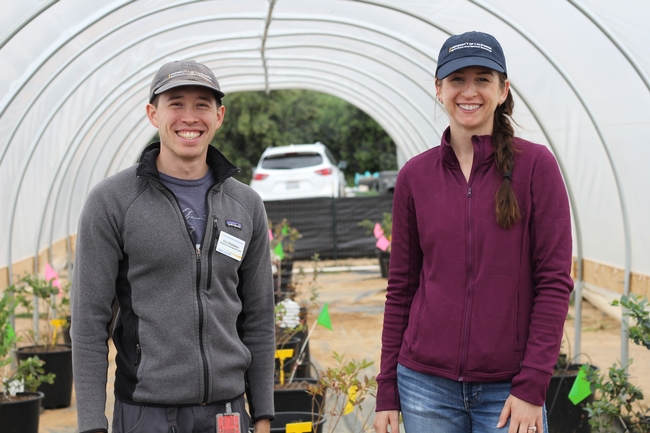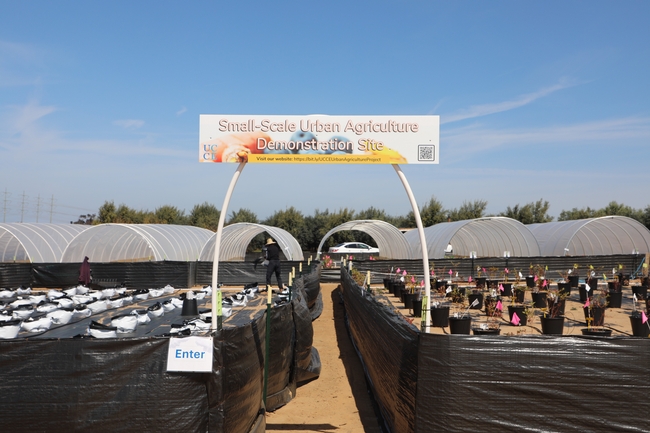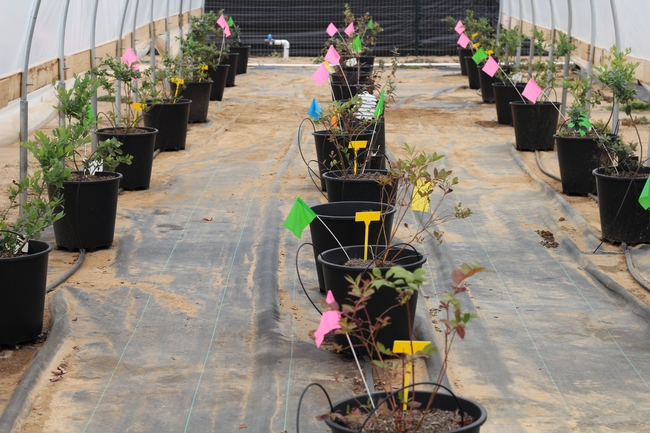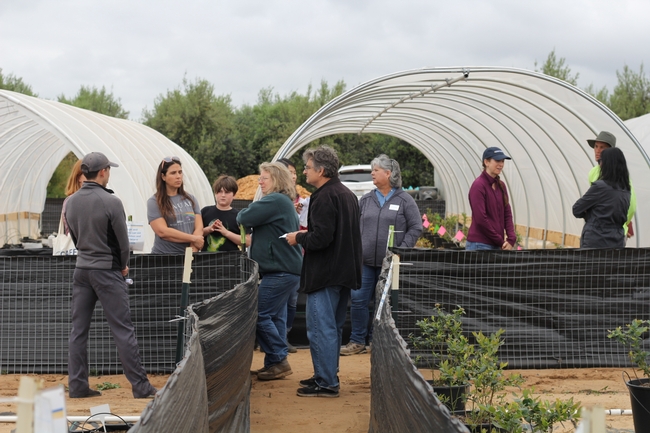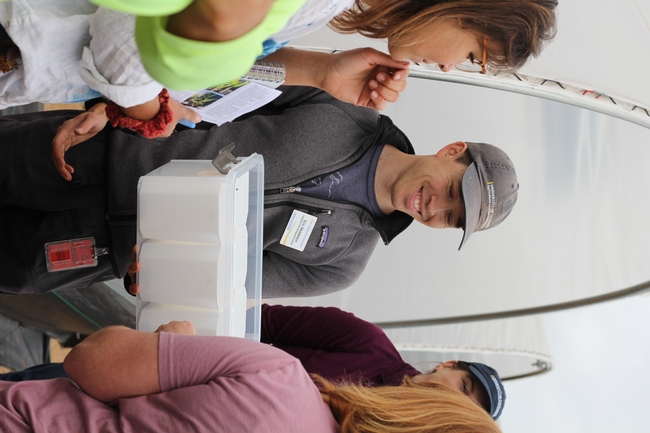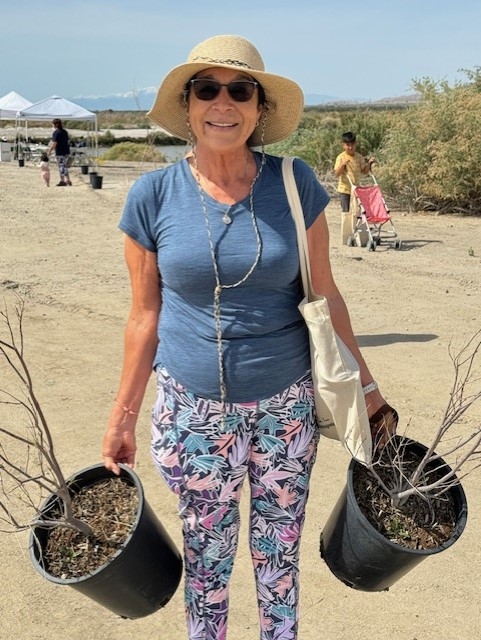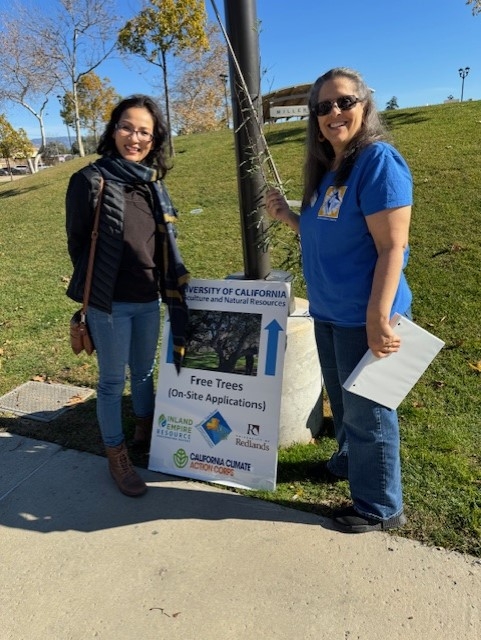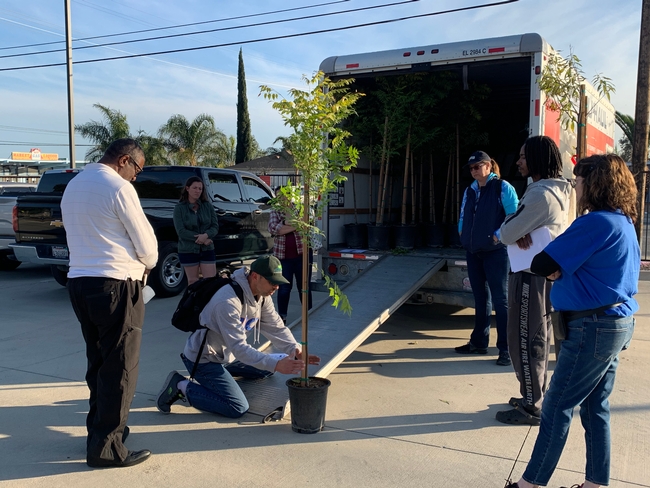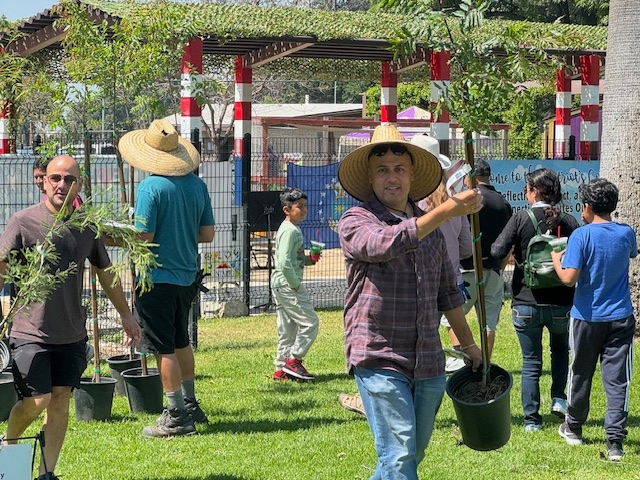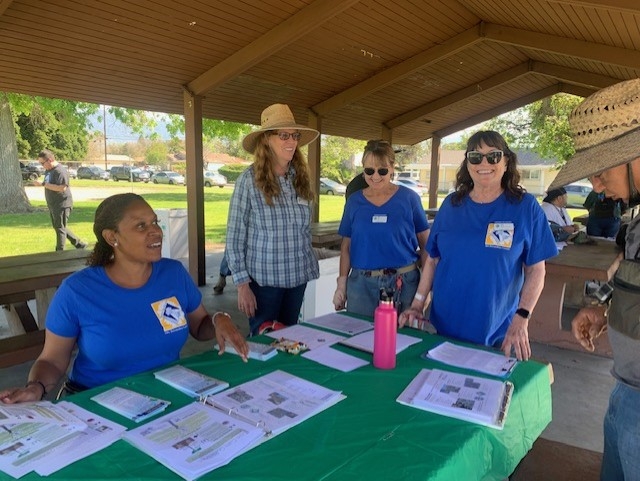Posts Tagged: urban
NRCS in the City
- Author: Annie Edwards, Urban Conservationist
- Author: Catherine de la Peña, Soil Conservationis
Are you an urban grower looking to improve the sustainability of your farm? If so, the USDA Natural Resources Conservation Service (NRCS) may be able to help you achieve your conservation goals. NRCS is a federal agency focused on implementing on-farm conservation across agricultural operations. NRCS provides America's farmers and ranchers with financial and technical assistance to voluntarily put conservation on the ground, helping both the environment and agricultural land. While NRCS is a federal agency, our office in California tailors our financial assistance to meet the unique natural resource concerns we see across the state.
As NRCS evolves to address the changing needs of our farmers and ranchers, the agency has taken strides to better serve urban producers. As of today, 17 Urban Service Centers have opened in major metropolitan centers across the US, with an additional 10 offices being planned. In California, we have two new Urban Service Centers.
- Oakland Urban Service Center Contacts:
- Compton Urban Service Center Contacts:
NRCS has a variety of programs to assist producers, including our flagship programs, the Environmental Quality Incentives Program (EQIP) and the Conservation Stewardship Program (CSP). These programs provide financial assistance to producers for implementing and maintaining conservation practices including high tunnels, hedgerows, structures for wildlife, and irrigation systems. To learn if your operation would be a good fit, refer to Is EQIP Right for Me? and Is CSP Right for Me?.
NRCS is also connected to the USDA Office of Urban Agriculture and Innovation Production (UAIP), which offers the UAIP Grant and Composting and Food Waste Reduction (CFWR) Cooperative Agreements.
In-ground beds with drip irrigation at Florence Fang Community Farm, San Francisco.
NRCS can provide financial assistance for microirrigation.
How to apply. We recommend that once you have a basic idea of what your conservation goals are, you reach out to your closest Urban Service Center and set up an appointment. At this meeting, you can connect face-to-face with your county's NRCS and USDA Farm Services Agency (FSA) staff. Before you come in, review USDA's getting started guide and take a moment to look over NRCS definitions of historically underserved farmers and ranchers (HUFR). Many NRCS programs— including EQIP and CSP offer higher rates for self-identified HUFR. A specific guide for HUFR can be found here.
If you are interested in applying to any of our programs, you'll need to work with FSA to establish a farm and tract number. Along with registering for NRCS programs, there are added benefits of receiving a farm number, including alerts about new programs, inclusion in the agricultural census, and becoming eligible to elect FSA county committee members. To create a farm and tract number, you will need the following:
- A completed New Customer Data Worksheet, submitted to your local NRCS office. Find the form, as well as instructions on how to apply, here.
- A deed/lease certifying that you have control of the land.
To apply for NRCS programs, you will need to submit a CPA-1200 application to your local NRCS office, which accepts applications year-round. After we receive your application, we will work with FSA to ensure that you are eligible for our programs.
NRCS is committed to helping people help the land— that means all people, including urban and small-scale growers. We look forward to working with you and providing the best service possible to you on your journey.
Svastra: the Sunflower Bee
It's nicknamed "the sunflower bee" for good reason. It forages on sunflowers. We recently spotted a longhorned bee, Svastra obliqua, also called "the sunflower bee," on Gaillardia, aka blanket flower, a member of the sunflower...
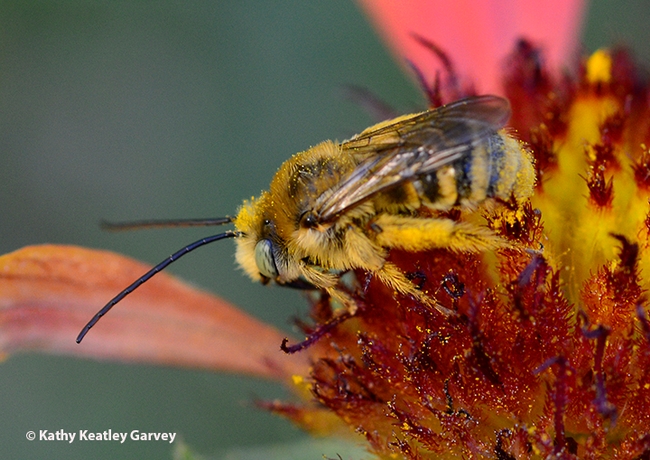
Svastra obliqua, "the sunflower bee," foraging on a blanketflower, Gaillardia. (Photo by Kathy Keatley Garvey)
Could empty lots be growing food, economic opportunity?
UCCE scientists study feasibility of specialty crops for small urban growers
The vacant lots around your neighborhood could be growing fruits and vegetables and making local produce more accessible – while reducing energy needed to transport and distribute the food. Could turning those empty lots into small farms also become opportunities for economic development?
To answer this question, a team of researchers from University of California Cooperative Extension in San Diego County are investigating the economic feasibility of growing high-value specialty crops in urban settings like vacant lots. The project – led by Eric Middleton, UCCE integrated pest management advisor for San Diego, Orange and Los Angeles counties – is currently in progress at The Flower Fields in Carlsbad, a seasonal attraction for locals and tourists.
Tucked away in the back of the field is the Small-Scale Urban Ag Demonstration Site where Middleton and his team established a small farm on approximately 17,000 square feet, starting fall 2023. Funded by the U.S. Department of Agriculture National Institute of Food and Agriculture, the farm is designed to evaluate containerized production both outdoors and under high tunnels.
Growers don't necessarily need land, just space
High tunnels, also referred to as hoop houses, are semi-permanent structures that act similarly to greenhouses in providing a controlled environment. For the experiment, Middleton will compare cost, effort and durability of two types of high tunnels: one made of steel and the other out of PVC pipes.
“We want to give interested growers information on as many options as we can,” said Middleton, who explained that the project is motivated by the challenges of urban settings, including limited space and lack of arable land.
In the trial, they are growing turmeric, ginger and blueberries. The high-value crops were selected because of their potential to earn a profit. Data evaluating plant variety, soil mix, fertilizer, growth performance, yield and pest and disease pressures will be collected and reported when the project concludes in 2026.
As the crops develop in containers – blueberries in pots and turmeric and ginger in grow bags – Middleton pointed out the mobility aspect of the study, noting that growers don't necessarily need land, just space.
Whether it's a backyard or a rooftop, containerized production means easier transport, especially since vacant land doesn't always remain vacant forever and urban lots may often need soil remediation. Growing in containers solves the anticipated problem of having to relocate.
Where to set up shop in San Diego County
Jan Gonzales, project coordinator and community education supervisor for UCCE San Diego County, is leading the effort to identify available urban land in San Diego County as well as the policies and procedures for growers to access these spaces.
Gonzales is collaborating with community members who are working on similar projects to identify space for prospective growers.
“This has been done before for different objectives and for specific areas in the region, but the information was either project-specific and not publicly available, or not easy to find,” Gonzales said.
Having spoken with people associated with previous or ongoing agricultural land mapping projects, Gonzales has agreed to coordinate and facilitate an advisory work group to discuss areas of potential collaboration and develop project efficiencies. She anticipates holding the first group meeting before the end of the summer.
A production guide to help community members re-create the project
The ideal audience for a study like this is anyone who wants to grow specialty crops, according to Lindsey Pedroncelli, interim director of UC South Coast Research and Extension Center in Irvine, who worked on the project alongside Middleton when she was a staff research associate with UCCE San Diego.
“If you're a new grower or a grower who wants to diversify your crop production, what we're learning here can be applied to you,” said Pedroncelli.
Pedroncelli has been instrumental in bringing the experiment to life and documenting its step-by-step workflow thus far. The production guide, which is being created as the study unfolds, will include instructions detailing how to replicate the experiment from the ground up. Currently, it contains information on how to design your farm, the materials to buy, building structures, irrigation setup and crop management.
The most intriguing open question, whether the operation is profitable, is the driving force behind the production guide and will certainly be addressed, Pedroncelli said.
Book a tour and visit the farm
When visiting the farm, you'll encounter three varieties of blueberries: Star, Snowchaser and Misty. Snowchaser has been a top producer since it was planted in January, but the variety is known to be an early season producer.
Using only one variety of each, the turmeric and ginger were planted in late March-early April. With some unanticipated cold weather in San Diego County, both crops struggled when transitioning out of dormancy, leading to very slow progress, which the team is still navigating today.
Visually, Middleton and his team have noticed differences between the crops growing under the high tunnels versus those grown outdoors, although the data has not been analyzed to confirm or explain notable differences.
Attempting to demonstrate how to profitably grow high-value crops in urban settings using limited space and resources, Pedroncelli said she hopes this study will also encourage people to grow culturally significant crops for their communities.
To tour the Small-Scale Urban Ag Demonstration Site at The Flower Fields in Carlsbad, email Eric Middleton at egmiddleton@ucanr.edu with "Urban Agriculture Demonstration Site Tour" in the subject line.
To learn more about the project and its progress, visit https://ucanr.edu/sites/socalIPM/Small_Scale_Urban_Agriculture_Project_/.
Lawn-pocalypse! Surviving Drought
Ah, summer! The season of sunburns, pool parties, and… lawn droughts. If your once lush, green carpet now looks like a crunchy brown doormat, you're not alone. Let's dive into why your yard is staging a dramatic death scene and what you can do to...

Bermuda grass and weeds overtaking drought stressed turf grass.
2,000 Climate-Ready Trees Provided to Residents of Low Shade Neighborhoods
To date, over 2,000 climate-ready shade trees and tips on their planting and long-term care have been provided by UC Master Gardeners and over 20 partners to residents of low shade neighborhoods in San Bernardino and Riverside Counties through the “Trees for Tomorrow Start Today” project. Tree species given away are identified from research projects including the joint University of California/United States Forest Service (USFS) study at UC Riverside as well as from other research, local observations, and input from the green industry and academic colleagues.
The "Trees for Tomorrow Start Today" project was implemented in 2019 by Area UC Cooperative Extension Horticulture Advisor Janet Hartin with support from Mandy Parkes, Inland Empire Resource Conservation District Manager. A "train the trainer" model provided education to Master Gardener volunteers from San Bernardino County on project elements and follow-up. Master Gardeners now manage many of the events. In 2023, the program expanded into Riverside County. Several other Master Gardener programs throughout the state have also expressed interest in implementing the "Trees for Tomorrow Start Today" project.
Why is this project so important? 95% of Californians now reside in cities and suburban environments. Resulting urban heat islands created by built environments coupled with impacts of climate change can be mitigated through nature-based solutions. Planting climate-ready shade trees now will help ensure cooler urban areas in the next several decades as trees mature and maximize their urban ecosystem benefits. Fortunately, the shade from a single well-placed tree can decrease surface temperatures of black asphalt and artificial turf by more than 70 degrees F in hot inland and desert cities. Studies show that surrounding air temperatures can also be reduced through the transpiration process.
A major goal of the"Trees for Tomorrow Start Today" project is to enhance tree canopy cover in low shade neighborhoods also plagued with much higher than average levels of air pollution and pulmonary and cardiovascular disease incidence. Events over the past month have occurred in Fontana, San Bernardino, and the Salton Sea.
Other partners include San Bernardino County, City of San Bernardino, California Climate Action Fellows, Tree People, Coachella Valley Resource Conservation District, Alianza Coachella Valley, Inland Empire Urban Conservation Corps, several water districts, and other groups.
Thank you to all our partners and, especially, our tree recipients, for greening and cooling your yard and neighborhood!


